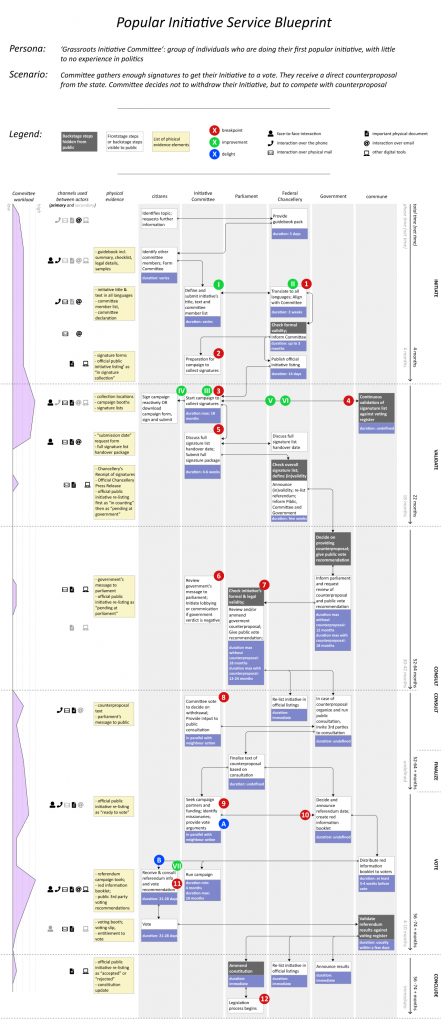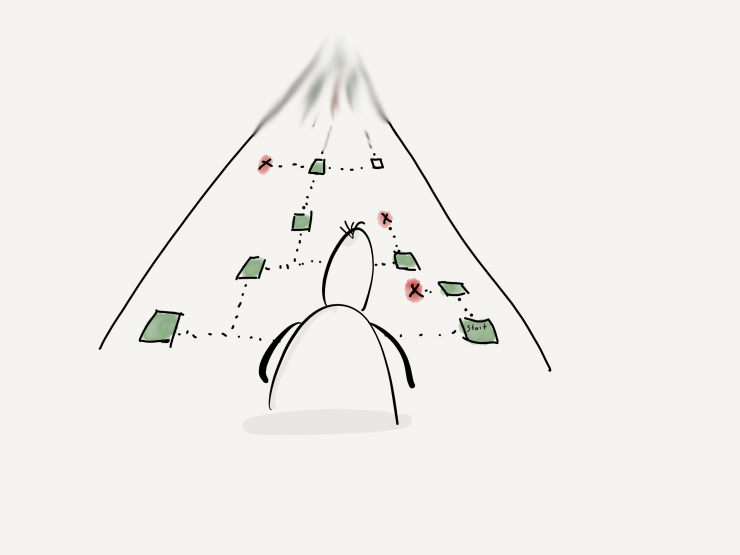In my research of Swiss Direct Democracy (SDD), I only identified visualizations of its processes that focus on workflow or timing. These do not represent a citizen point-of-view, and omit the small details that can make or break a process. So for this service design analysis I created multi-stakeholder service blueprints that focuses on a citizen point-of-view.
A service blueprint is a diagram that visualizes the relationships between different service components (actors, physical or digital evidence, and processes), in order to optimize how an organization delivers a service experience.
My goal with this analysis was to identify citizen tasks, as well as touchpoints, breakpoints, internal process complications, delights and time implications. The ultimate objective is that by identifying these, the processes can be improved when building a similar model for commercial organizations.
Hold on to your hats, because this first illustration is complex – just like reality. It illustrates Popular Initiatives, the tool whereby citizens can propose changes to the constitution. (See more details here.) The entire flow takes several years, and has a cost of at least 150.000 Swiss francs, so it is a complicated and challenging journey. Because of journey branching there are multiple versions to this journey – I only illustrated one, which sums up most important details.
You can see the entire service blueprint in high definition here. The next post will highlight some specific elements.






















[…] […]